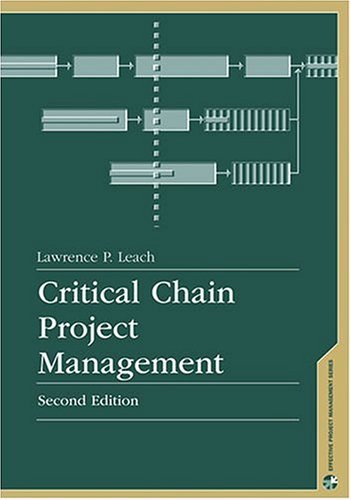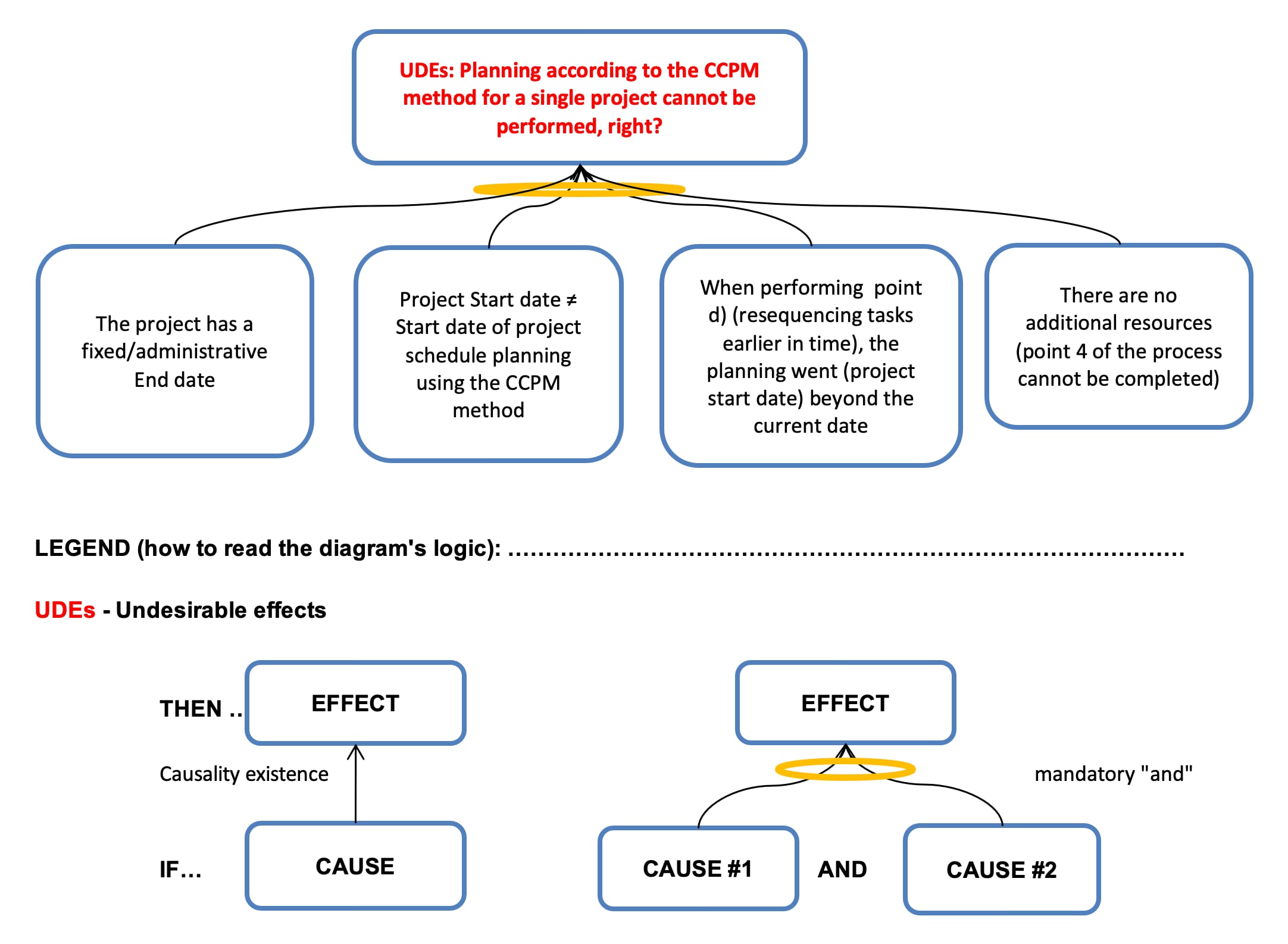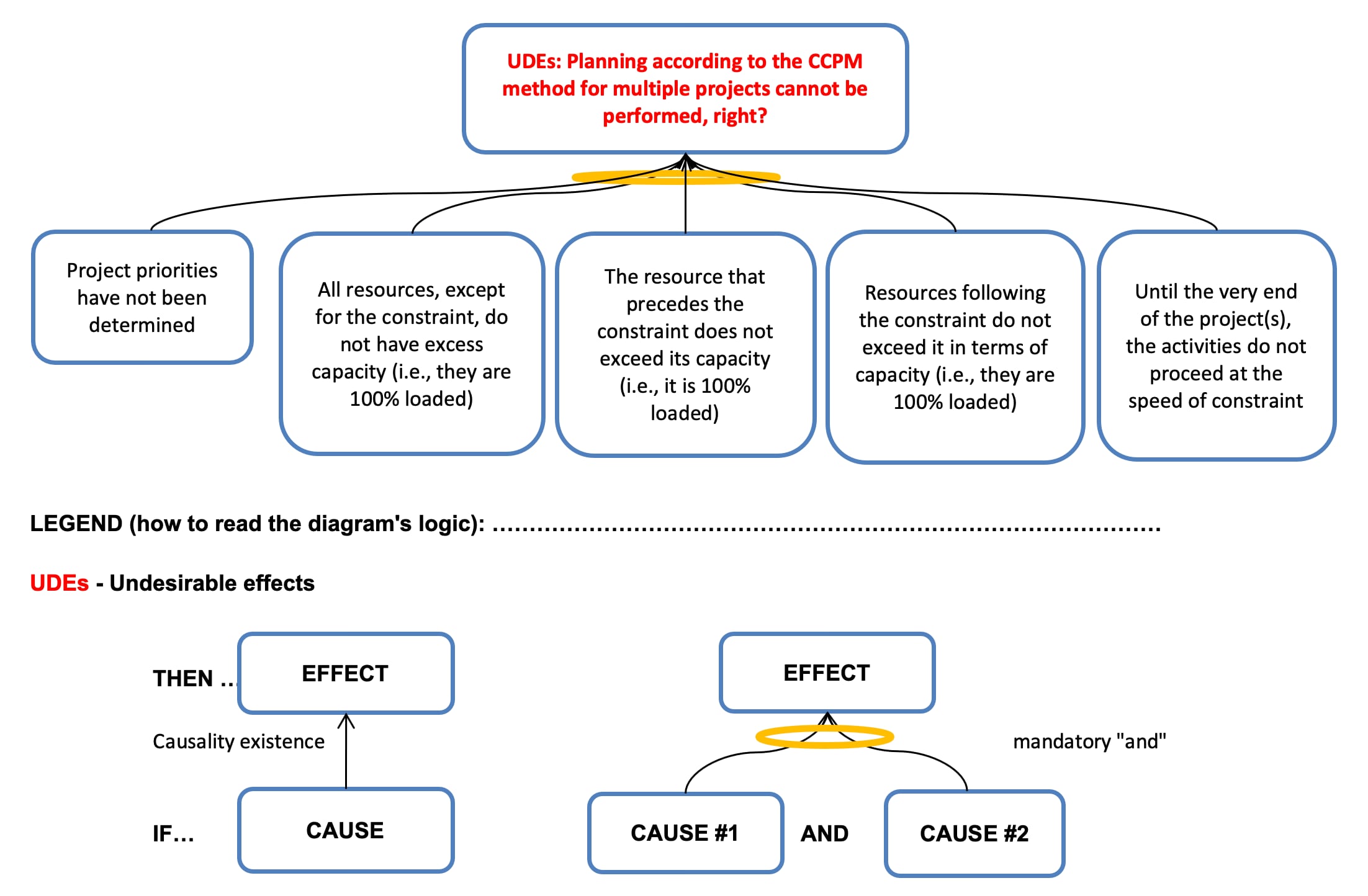Dynamics: Mastering Values, Leadership,
and Change» (ISBN-13: 978-1405133562)

The book Lawrence P. Leach “Critical Chain Project Management” attracts the attention of all managers who strive to manage projects effectively. I want to share my impressions of reading and analyzing this book with you, dear colleagues.
This text presented the CCPM theory you need, including some of the supporting TOC, TQM, and PMBOK™ principles (page 271).
On the theory of system constraints (TOС) by E. Goldratt concerning the theory and practice of project management. And, to be more precise, about the transfer of theoretical assumptions and practical achievements of TOC in production systems to a project management system.
As the author writes on p. 189, “The general idea carried over from manufacturing is that the further a resource is from the constraint resource in the plan sequence, the more excess capacity and/or the larger buffer it needs to not affect the overall lead time.”
If you are a project manager or work in the field of project management, then read for at least two reasons:
- the book lists many of the initial prerequisites for the implementation/use of project management in the organization “in general,” and not only according to the critical chain method,
- the critical chain method is already used in project management; at least, you need to know about it.
But I dare to assume (this is our opinion) that there are conditions under which this method will not bring you practical benefit.
Here they are:
Start reading from chapter 6, “Developing the (single-project) critical chain plan,” 6.1 The process (page 151):
1. Identify the critical chain.
a. ...
b. ...
c. ...
d. Remove resource contention by resequencing tasks earlier in time. (Do not worry about creating new conflicts with this step; you will resolve those in sequence.)
2. Exploit the critical chain.
3. Subordinate the other tasks, paths, and resources to the critical chain.
4. Elevate (shorten) the lead time of the project by using added resources for certain windows of time to break contention.
5. Go back to step 1, and identify the critical chain. Do not allow inertia to become the constraint.
Ask a question in the style of TOC thought processes.

Here's how the diagram reads:
IF the project has a fixed/administrative End date (not deferred),
AND the Project Start date ≠ Start date of project schedule planning using the CCPM method (you have time to plan),
AND when performing point d) (resequencing tasks earlier in time), the planning went (project start date) beyond the current date,
AND There are no additional resources (point 4 of the process cannot be completed),
THEN planning according to the CCPM method for a single project cannot be performed, right? (Are its limitations listed above?).
Then move on to chapter 7, “Developing the enterprise multiproject critical chain plan.”
Ask a question in the style of TOC thought processes.

Here's how the diagram reads:
IF project priorities have not been determined,
AND all resources, except for the constraint, do not have excess capacity (i.e., they are 100% loaded),
AND the resource that precedes the constraint does not exceed its capacity (i.e., it is 100% loaded),
AND the resources following the constraint do not exceed it in terms of capacity (i.e., they are 100% loaded),
AND until the very end of the project(s), the activities do not proceed at the speed of constraint,
THEN planning according to the CCPM method for multiple projects cannot be performed, right? (Are its limitations listed above?).
These questions will be useful to you in self-analysis of the management system in your organization. Provide general information on the possibility of implementing a project management system and not only according to the critical chain method.
The book is very controversial in many places, and its recommendations work only in a certain type of culture or paradigm. The author expressly states this:
Pages 223-224 “I prefer to describe the end vision in terms of the behavior necessary to operate critical chain projects successfully.”
Chapter 9.3.5 Paradigm lock (pages 232-239)
I absolutely agree with the author here, and I am ready to confirm this with the results of the SDTST polls.
Page 184 “I have made a point of asking groups of project managers (many of whom belong to the Project Management Institute, including certified project management professionals), “How many of you routinely resource-level your project plans?” (Resource loading means identifying the resources needed for each task; resource leveling is removing the conflicts in which demand exceeds supply.) My unofficial survey indicates that only about 5% of project managers routinely resource-level their plans. In other words, the situation is usually worse than I assumed above: They do not even know where the overlaps occur. I then ask them, “Why not?” Most need some prodding, but usually the answer is one of two things: (1) It is not worth it, because management will change everything anyhow, or (2) it makes the schedule too long.”
This fact suggests that certified managers do not use the technical capabilities of Microsoft Project, and everything written above is essentially a description of Task management, where mathematical calculations using the Duration = Work ÷ Resource Units formula are replaced by expert assessments. At the time of the publication of the English version of the book by Artech House, Inc., in 2005, in August 2002, Tim Pyron's book "Special Edition Using Microsoft Project 2002" was already out, which describes how to specify loading by resources."
In continuing to use MS Project on page 164, follow the link www.advanced-projects.com and read in Updates: CCPM+, our project management software add-in to Microsoft Project now includes the Project Chain View. The Project Chain View enables project teams to know exactly where to focus work to keep the project on schedule, and to plan ahead for schedule improvement if and when needed. This tool turns project management around, from looking through the rearview mirror with variance explanations to driving the project forward by looking through the windshield to focus on what matters most.
And here is how on page 142, the author explains how to complete the project within the budget “That is, most work package managers have been trained to spend all the money in their work package so they do not get less next time. Your estimate of how successful you are at changing that paradigm should influence your estimate of the cost buffer.”
As you see, changing the paradigm is critical.
Chapter 8, Measurement and control, discusses reporting and shows some examples of reports (page 203). For our part, we want to show you how to set up and use some of the CCPM reports in MS Project, which you will find in Appendix No. 1
Page 258 “Critical chain simplifies conventional project risk management because it need deal only with special cause risks.”
Such an assumption in Chapter 10.2.1, The risk matrix, page 260 “Relatively small projects (i.e., less than a few million dollars and under one year) should not have a risk list in excess of 10 items. If your list for a project of this size just seems to have many more high-impact, high-consequence risks, ask yourself if you really want to do that project!”. It looks strange without considering the term risk appetite.
The overall impression of the book is that it is written for TOC fans, not for certified project managers (PMI, PRINCE2, IPMA….) and scheduling and network planners who work professionally with professional project management software.
How to set up and use CCPM reports in MS Project
Option number 1.
Enter tasks with complete duration without resources to visualise the project buffer on the Gantt Chart.
If you need this MS Project file, please write in the comments the email where to send a link to download this MS Project file.

1. Establish a Finish-Start link between "Project End" and "Green Buffer" during planning (before saving the baseline).
2. Save the project baseline:
2.1. the Basic Finish date of the red buffer will become the Basic Finish date of the entire project and will be displayed on line 0 (zero),
2.2. this will make it possible to track the proportion of the project buffer used.
3. Switch the mode to "Manual" for the buffer tasks after planning is completed (before the base plan is saved).
3.1. The buffer will not move along the timeline after switching the mode to "Manual" for the buffer tasks.
4. Remove baseline for project buffer tasks.
5. Remove the Finish-Start connection between "Project End" and "Green Buffer" - Milestone (Project End) will "move over the buffer" in case of deviation from the plan, which is convenient to show in one timeline figure.
ATTENTION!
After deleting the Finish-Start link between "Project Finish" and "Green Buffer", the Critical Path may change, as all project tasks will have a free time reserve in the amount of a buffer.
6. Enter % Complete = 100% for each buffer task so that they do not “spoil” the % Complete indicator of the project.
Option number 2.
Enter tasks with incomplete duration without resources to visualize the resource buffer on the Gantt Chart.
As you can see in the figure, Work Duration = 2, Calendar Duration = 24.

Despite the gap in the figure on the Gantt Chart, the buffer looks like a single segment = 24 calendar days on the timeline.

Embraer has established a legacy by consistently taking on seemingly impossible challenges. In the aviation industry, the typical timeline for developing a new program spans from 7 to 9 years. However, the E2 Program surpasses being just a new aircraft; it represents an entirely novel industrial framework, an innovative supply chain, enhanced connectivity for passengers, operations, and maintenance, a fresh marketing strategy, and a catalyst for socioeconomic improvement.
To ensure efficient progress, the Theory of Constraints has been implemented, effectively utilizing the Critical Chain methodology. Deviations are communicated through a simple color-coded system (green, yellow, and red). Drawing inspiration from a bike race analogy, the entire team is encouraged to push a little harder, and a buffer has been incorporated at the end of the program to accommodate unforeseen delays. The Program Management team is fully dedicated to supporting the critical components, applying a five-step approach.
The most notable achievement of the E190-E2 Program has been successfully delivering a new airliner two months ahead of an initially challenging schedule (within 5 years from Business Plan Approval/Program Launch to First Revenue Flight), while adhering to a tight budget and surpassing the specifications of its closest competitors in the crossover jet category. Moreover, the program has established a mature entry into service, showcasing its excellence.
